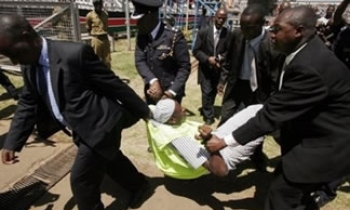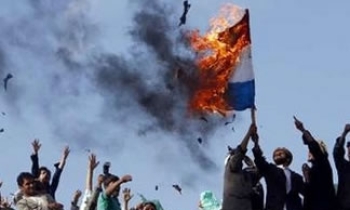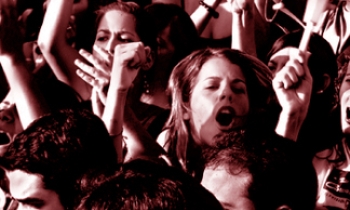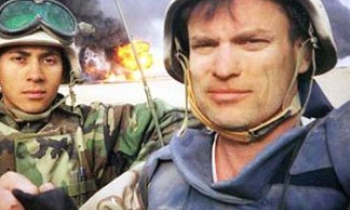Thirteen employees of media organisations have been killed and two disappeared in the past six months in the Western Hemisphere.
According to preliminary reports presented Sunday by members of the Inter American Press Association (IAPA), media freedom is increasingly under attack in the Western Hemisphere, especially in countries such as Venezuela and Colombia. Final reports will be released Tuesday.
Mexico, meanwhile, has become one of the most dangerous countries in the hemisphere for journalists, said Gonzalo Marroquin, head of the IAPA's committee on press freedom, during the group's 63rd General Assembly in Miami. "The situation is not improving in general. We are seeing that in some countries it is becoming considerably worse," Marroquin said.
Some advances have been made, the group said. The US House and Senate Judiciary committees have approved bills that would shield reporters from being forced to reveal their sources in federal court. Argentina's Supreme Court ruled a local government could not withdraw advertising from a newspaper simply because of its critical coverage. The Mexican senate decriminalised libel and defamation on a federal level.
In Mexico, however, three journalists and three delivery workers were killed. Two other reporters disappeared. Journalists in Brazil, Colombia, El Salvador, Haiti, Paraguay, Peru and the United States also were killed. Originally, IAPA put the number at eight.
In the US, Oakland Post Editor Chauncey Bailey was killed during his morning walk in August by a man who reportedly told authorities he was concerned about Bailey's investigation into the finances of his employer.
US newspapers cited concern over a federal judge's order that five journalists identify government sources who told them a scientist was a suspect in a series of 2001 anthrax attacks. And they reported the continued detention of Associated Press photographer Bilal Hussein, who has been held in Iraq by the US military since 2006 but has never been charged.
IAPA's longest and most passionate discussion focused on Venezuela, where, representatives said, the government of Hugo Chavez is slowly muzzling any media outlet critical of the government. Venezuelan newspapers reported nearly 30 incidents of politically motivated attacks or lawsuits against journalists there in the past six months.
Jose Ocanto, editor of the daily El Impulso, told the Associated Press that he is still battling legal and civil defamation cases stemming from a four-year old story on public corruption. After a court initially ruled in his favour, Ocanto was chased through the courthouse by protesters and his car set on fire, he said.
In December, a military official threatened to kill him if he did not reveal the name of a photographer who took a picture of the official's daughter carrying his weapon. "I am worried because in this hemisphere, there is a lack of awareness of what is happening. Other countries think we are exaggerating the situation," Ocanto said.
The situation in Cuba has changed little in the 14 months since President Fidel Castro turned over power to his brother. Twenty-seven independent reporters are jailed, according to IAPA.
And in the case of Colombia, Humberto Castello, the executive editor of the Miami Herald's Spanish language sister paper, denounced President Alvaro Uribe for accusing the paper's stringer of reporting lies.
Journalist Gonzalo Guillen was already receiving death threats before Uribe's statement. Following the president's accusation — which the paper maintains is unfounded — Colombian authorities rescinded protection of Guillen, and he was forced to flee the country.
By IAPA’s count, 320 journalists in the Americas have been killed in 20 years in connection with their work. While many killings have been committed by narco-trafficking terrorist groups, others have come over more-mundane print or broadcast revelations of municipal corruption, often linked to organised crime.
Now, more countries are assigning special prosecutors to investigate the killings, convictions are on the rise, and several nations are stiffening penalties, lifting statutes of limitations and considering bills to make murder of a journalist a federal crime. In the past decade, 64 investigations have been completed, and 82 people are in prison or have served sentences for killing journalists.
Meanwhile, IAPA's "Project Impunity" — a programme that has put 82 killers of Latin American journalists behind bars — will continue for another four years, thanks to a big grant from the John S and James L Knight Foundation, according to Editor & Publisher.
Foundation President Alberto Ibarguen, a former Miami Herald publisher who started the project, announced the four-year, $2.5 million grant during the association's annual meeting in Miami. Since 1995, the Knight Foundation has donated $7.7 million to Project Impunity.
Project Impunity funds IAPA's "rapid response unit" of reporters who investigate the circumstances of a journalist's murder. Their reports, and cold-case murders, are publicized in an ad campaign with 800 newspaper participants in the hemisphere. The so-called "impunity rate" of unsolved or unprosecuted murders of journalists in Latin America has fallen to 57 per cent from 79 per cent since the project started in 1995.
"Let's remember that not long ago, in the 1980s, when a journalists was killed in Latin America, nothing was done. While there is still work to be done with the impunity rate, it means that when a journalist is killed, justice is possible," he said.









